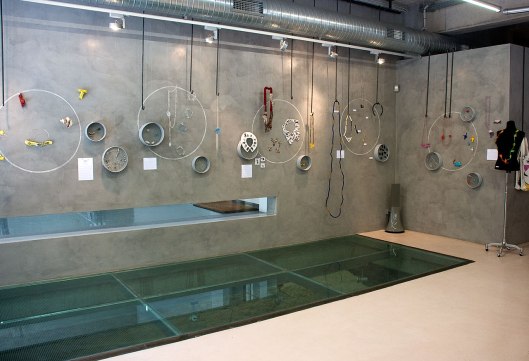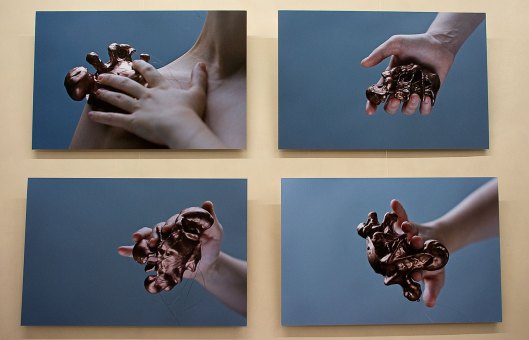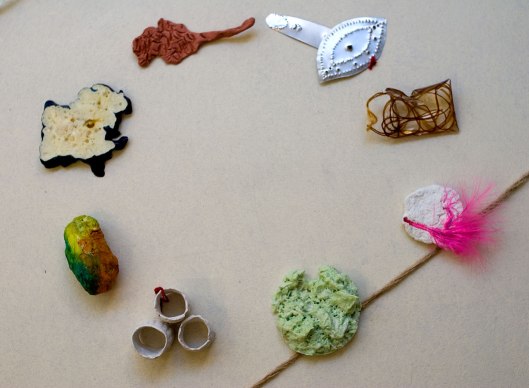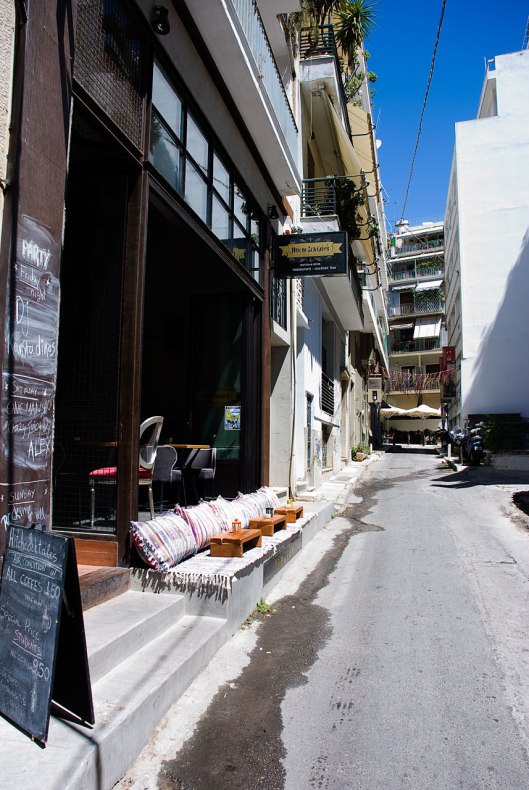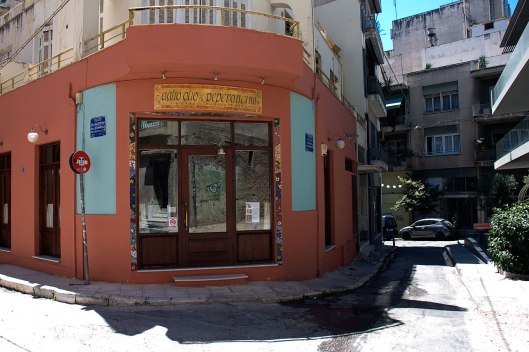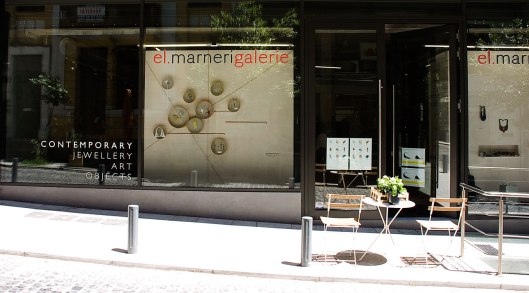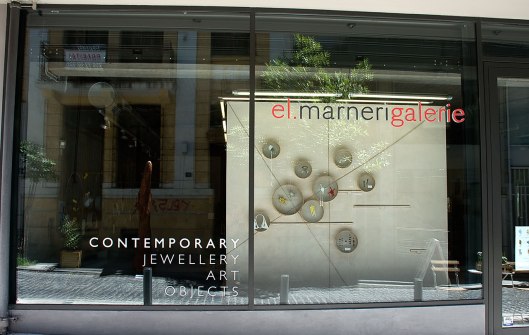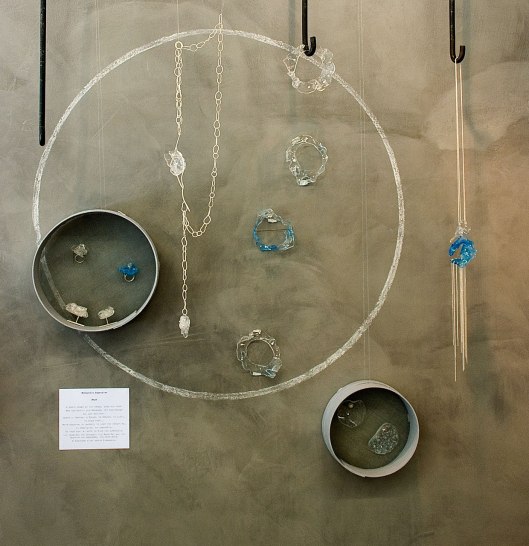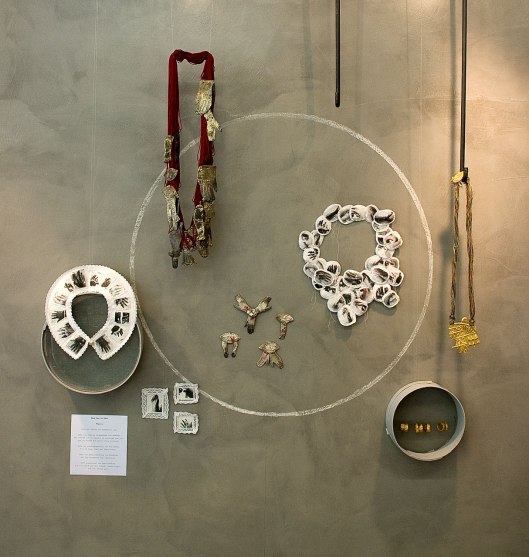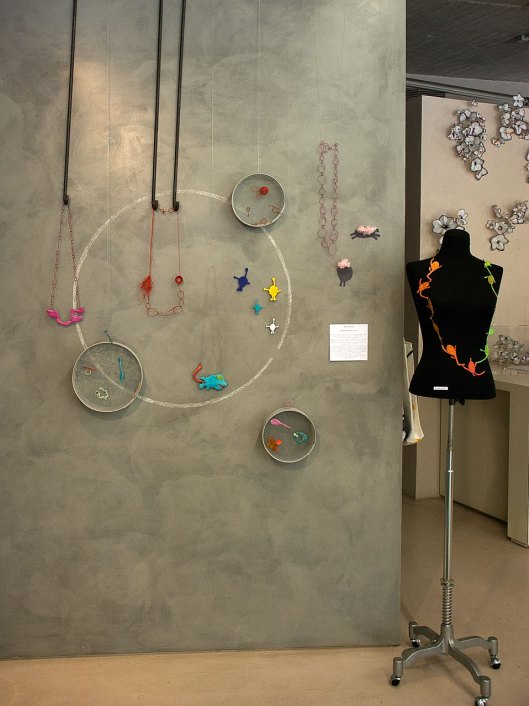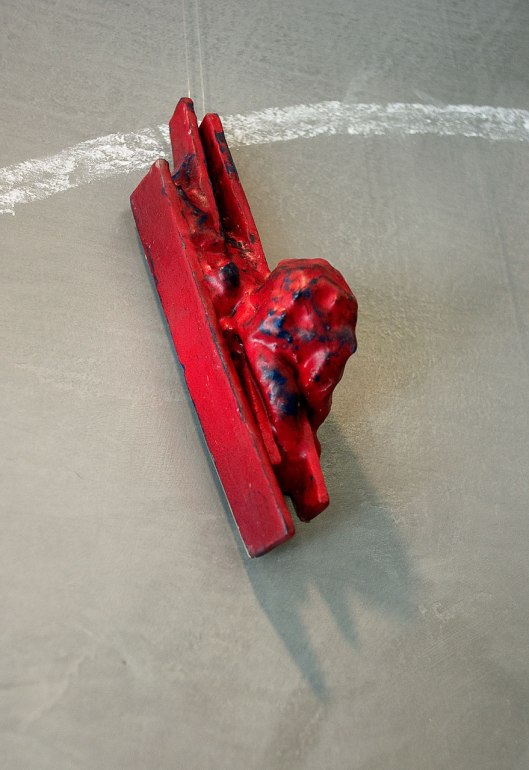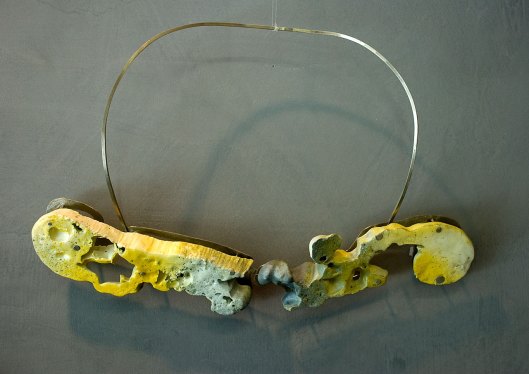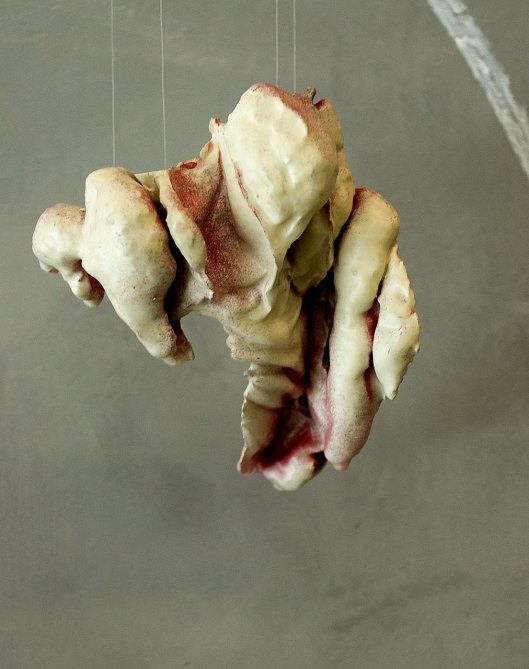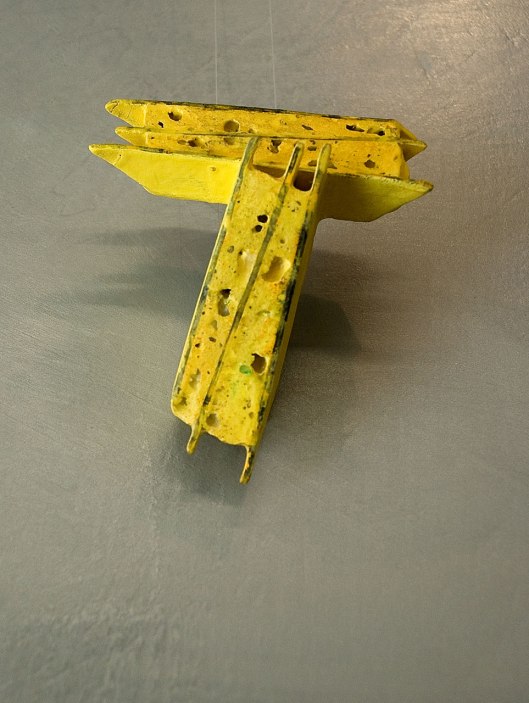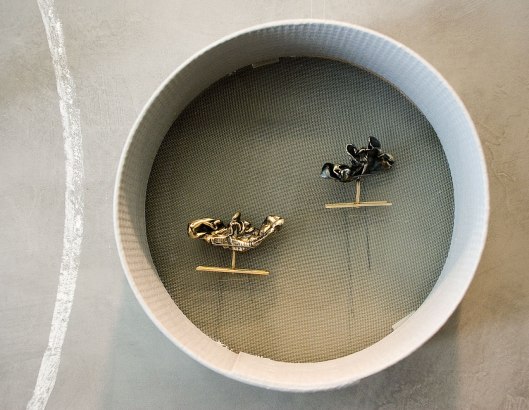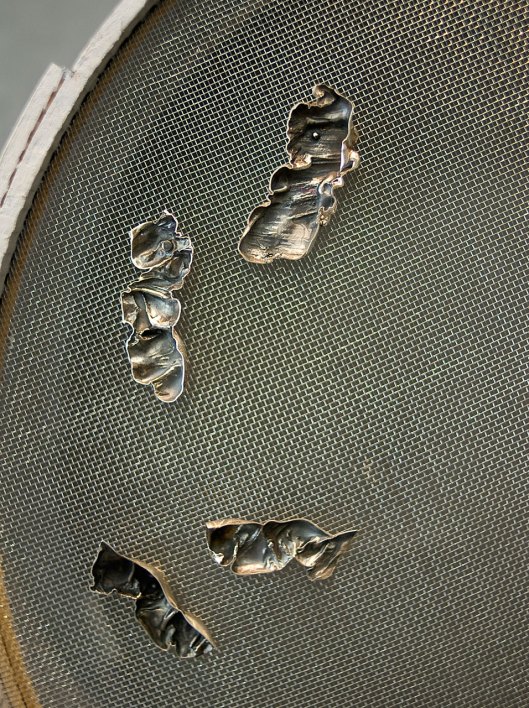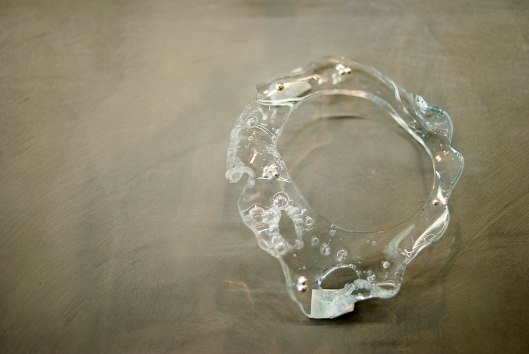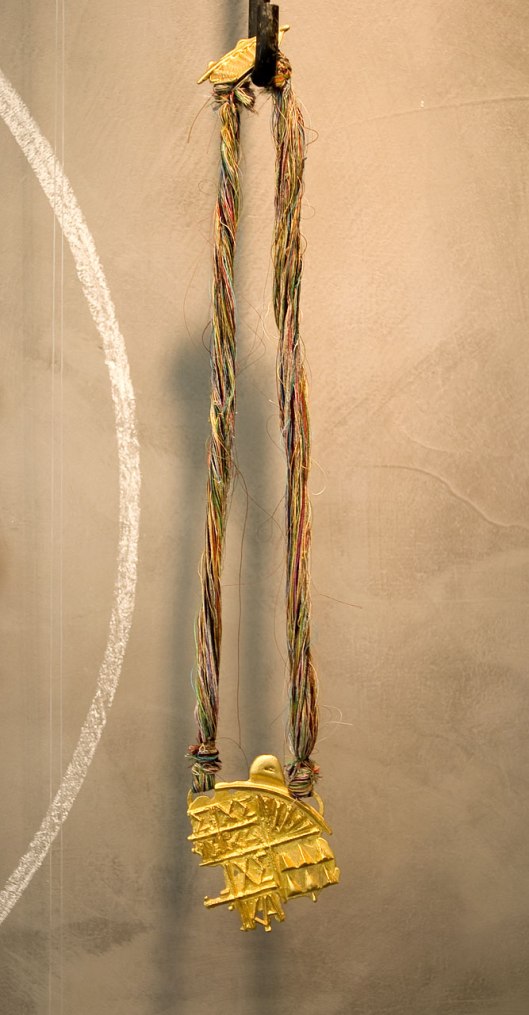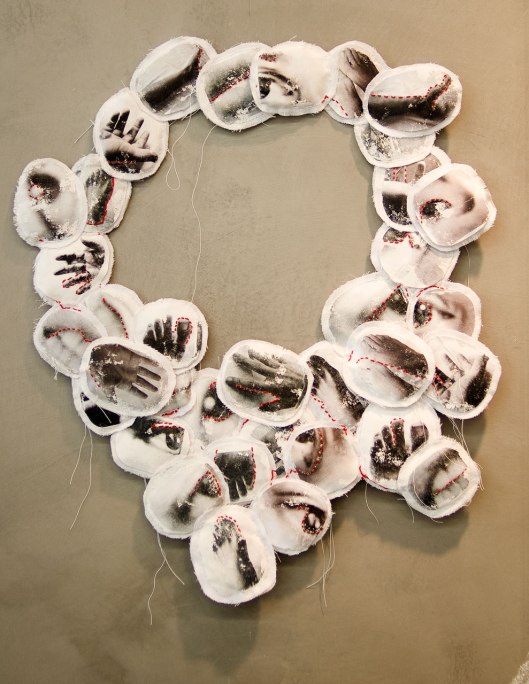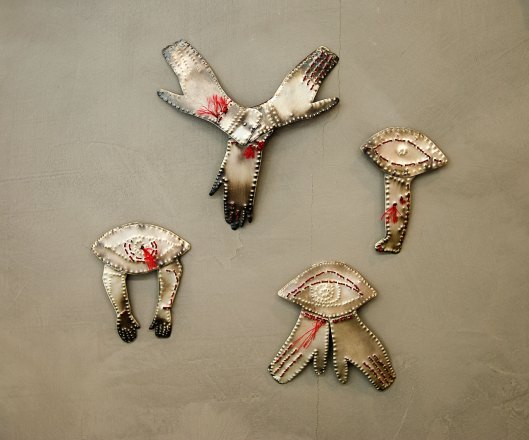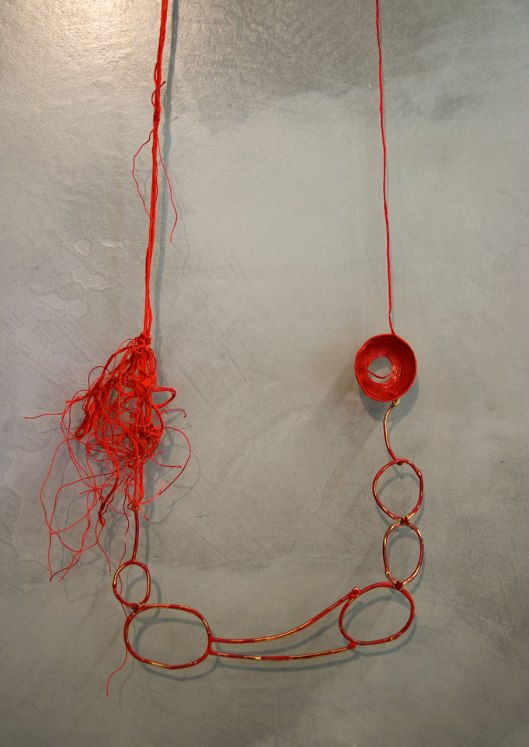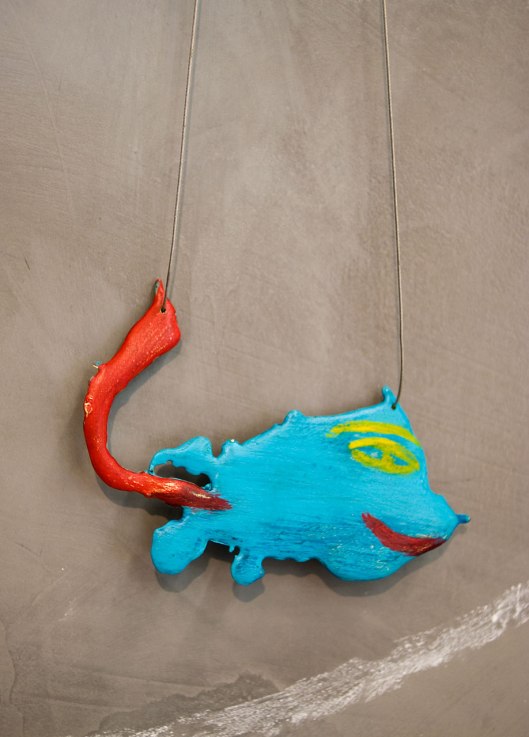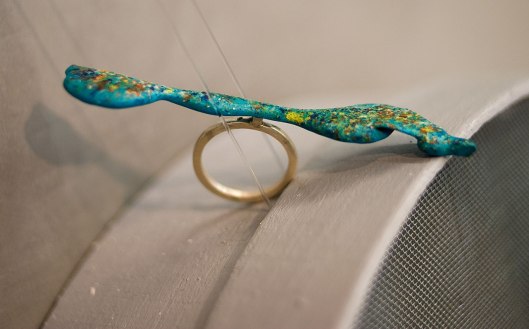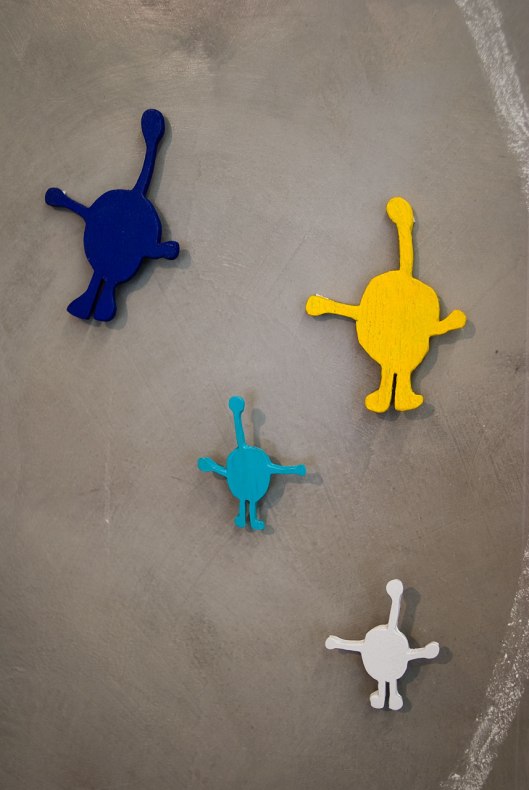This year’s Schmuck is over and if you’ve had enough of it then I’m with you. However, bare with me on this one.
All the shows I managed to visit where amazing (check out photos here), and you’ve probably read tons of reports on many of them. However, I decided to write about this last show I was lucky to catch just before my trip back to Greece. Exhausted and on my way back to my hotel on Sunday afternoon, I decided that I didn’t want to see another piece of jewellery for months to come. However, I suddenly came upon Gallery Kobeia, which happened to be right next to my hotel and which I hadn’t had the time to visit all that time. I just thought I had missed the show. It was late and I thought that the gallery would be closed so I hoped to catch a glimpse of some pieces from the windows but when I realized that the show was still going on, I took a deep breath, thought to myself “Ok, this is the last one, for sure” and went in. Lucky me 🙂
The wonderful ‘Bench 886’ team consists of 10 Taiwanese jewellery artists, seven of whom I met in Munich. The name of the group derives from the jeweller’s working bench and 886 is the international dialing code of Taiwan. Here’s what they’ve created.

Wen-Miao Yeh at the Bench 886 exhibition. Photo by Eleni Roumpou
Space is not only space but also sentimentally attached to ourselves.
Wen-Miao based her collection on architectural designs and personal memories. Specifically, she focused on two iconic London architectural structures, the London Eye and the Millennium Dome, both of which she associates with wonderful memories, like celebrating New Year’s Eve or visiting a concert with friends and loved ones. She is very sensitive to the relationship between people and the places they inhabit. The vibrant colors of her pieces reflect her happy memories from these two places.

Wen-Miao Yeh – Brooch (2013). Plastic, copper, paint. Photo by Eleni Roumpou

Wen-Miao Yeh – Brooch (2013). Plastic, copper, paint. Photo by Eleni Roumpou

Wen-Miao Yeh – Brooch (2013). Plastic, copper, paint. Photo by Eleni Roumpou

Wen-Miao Yeh – Brooch (2013). Plastic, copper, paint. Photo by Eleni Roumpou

Wen-Miao Yeh – Brooch (2013). Plastic, copper, paint. Photo by Eleni Roumpou

Wen-Miao Yeh – Brooch (2013). Plastic, copper, paint. Photo by Eleni Roumpou

Wen-Miao Yeh – Brooch (2013). Plastic, copper, paint. Photo by Eleni Roumpou

Wen-Miao Yeh – Brooch (2013). Plastic, copper, paint. Photo courtesy of the artist

Wen-Miao Yeh – Brooch (2013). Plastic, copper, paint. Photo courtesy of the artist

Han-Chieh (Joy) Chuang at the Bench 886 exhibition. Photo by Eleni Roumpou
Through my works I expect to pass an idea of the beauty of my homeland and bring it back to hearts where those beauties have been forgotten.
Joy created pieces that remind us of Taiwan; brooches and earrings similar to red bricks the houses are made of and necklaces that are made out of bamboo, like the hats her fellow countrymen and women wear. She points out to me the woman on the picture wearing her necklace and tells me that she is an actual farmer from her town. She is very affectionate of Taiwan (actually, all Bench 866 members that I met there are like that) and through her work she wants to express the strong emotions she has for her homeland.

Han-Chieh (Joy) Chuang – Red Brick Brooch Series (2013). Enamel, silver, copper, paper, steel, 18ct gold dust, brass dust. Photo by Eleni Roumpou

Han-Chieh (Joy) Chuang – Red Brick Brooch Series (2013). Enamel, silver, copper, paper, steel, 18ct gold dust, brass dust. Photo by Eleni Roumpou

Han-Chieh (Joy) Chuang – Red Brick Brooch Series (2013). Enamel, silver, copper, paper, steel, 18ct gold dust, brass dust. Photo by Eleni Roumpou

Han-Chieh (Joy) Chuang – Peasant necklace (2013). Bamboo leaf, paper, silver, fabric, gold foil, thread. Photo by Eleni Roumpou

Han-Chieh (Joy) Chuang – Bracelet. Photo courtesy of the artist.

Han-Chieh (Joy) Chuang – Red Brick brooch. Photo courtesy of the artist.

Heng Lee at the Bench 886 exhibition. Photo by Eleni Roumpou
Costumes and luxurious jewellery along with Eastern and Western history become the inspiration for my works.
Heng had the inspiring idea to combine the old with the new; tradition with technology. He was inspired by floral embroidery patterns taken from traditional women’s costumes; he used pixel versions of these patterns together with original embroidery that he made himself and the result was remarkable. The pixels become more blurred and the embroidered part of the pieces really stands out.

Heng Lee – Brooch (2013). Stainless steel, thread, silk organza. Photo by Eleni Roumpou

Heng Lee – Brooch (2013). Stainless steel, thread, silk organza. Photo by Eleni Roumpou

Heng Lee – Brooch (2013). Stainless steel, thread, silk organza. Photo by Eleni Roumpou

Heng Lee – Necklace (2013). Stainless steel, thread, silk organza. Photo by Eleni Roumpou

Heng Lee – Brooch (2013). Stainless steel, thread, silk organza. Photo by Eleni Roumpou

Heng Lee – Brooch (2013). Stainless steel, thread, silk organza. Photo by Eleni Roumpou

Heng Lee – Necklace (2013). Stainless steel, thread, silk organza. Photo by Eleni Roumpou

Heng Lee – Necklace (2013). Stainless steel, thread, silk organza. Photo by Eleni Roumpou

Heng Lee – Necklace. Photo courtesy of the artist.

Heng Lee – Brooch. Photo courtesy of the artist.

Yu-Ping Lin at the Bench 886 exhibition. Photo by Eleni Roumpou
I do not set out to be a jewellery or fashion designer but as my portfolio developed I became interested in both elements and aesthetics.
Yu-Ping uses paper cutting and folding techniques based on Origami and architectural patterns. Her 3D objects are witty and complex, and it is great fun to handle and wear them.

Yu-Ping Lin – Brooche (2013). Photo by Eleni Roumpou

Yu-Ping Lin – Brooches (2013). Photo by Eleni Roumpou

Yu-Ping Lin – Brooche (2013). Photo by Eleni Roumpou

Yu-Ping Lin – Brooche (2013). Photo by Eleni Roumpou

Yu-Ping Lin – Brooche (2013). Photo by Eleni Roumpou

Yu-Ping Lin – Brooches (2013). Photo by Eleni Roumpou

Yu-Ping Lin – Brooch. Photo courtesy of the artist.

Yu-Ping Lin – Necklace. Photo courtesy of the artist.

Ying-Hsun (Zita) Hsu at the Bench 886 exhibition. Photo by Eleni Roumpou
Nothing lasts, nothing is finished, and nothing is perfect.
Anybody who has worked with resin can tell you how stubborn and difficult this material is. That is why I was very impressed when Ying-Hsun explained to me the process of her work. Inspired by science, Asian aesthetics and the notion of Wabi-Sabi. With the help of magnets and resin she managed to capture iron filings in amazing patterns. Very impressive and elegant pieces.

Ying-Hsun (Zita) Hsu – Brooch (2013). Brass, iron magnetized, epoxy resin. Photo by Eleni Roumpou

Ying-Hsun (Zita) Hsu – Brooch (2013). Brass, iron magnetized, epoxy resin. Photo by Eleni Roumpou

Ying-Hsun (Zita) Hsu – Brooch (2013). Brass, iron magnetized, epoxy resin. Photo by Eleni Roumpou

Ying-Hsun (Zita) Hsu – Brooch (2013). Brass, iron magnetized, epoxy resin. Photo by Eleni Roumpou

Ying-Hsun (Zita) Hsu – Brooch (2013). Brass, iron magnetized, epoxy resin. Photo by Eleni Roumpou

Ying-Hsun (Zita) Hsu – Brooch (2013). Brass, iron magnetized, epoxy resin. Photo by Eleni Roumpou

Ying-Hsun (Zita) Hsu – Brooch (2013). Brass, iron magnetized, epoxy resin. Photo by Eleni Roumpou

Ying-Hsun (Zita) Hsu – Brooch. Photo courtesy of the artist.

Ying-Hsun (Zita) Hsu – Brooch. Photo courtesy of the artist.

Cai-Xuan Wu at the Bench 886 exhibition. Photo by Eleni Roumpou
My challenge is to use non-textile materials to transform a traditional craft technique into a contemporary art work which pushes the boundary of material and making technique.
Cai-Xuan Wu applied traditional textile techniques (knitting) on acrylics and these wonderful creatures were the result.

Cai-Xuan Wu – Brooch (2013). Acrylic, steel wire. Photo by Eleni Roumpou

Cai-Xuan Wu – Brooch (2013). Acrylic, steel wire. Photo by Eleni Roumpou

Cai-Xuan Wu – Brooch (2013). Acrylic, steel wire. Photo by Eleni Roumpou

Cai-Xuan Wu – Brooches (2013). Acrylic, steel wire. Photo by Eleni Roumpou

Cai-Xuan Wu – Brooch. Photo courtesy of the artist.

Cai-Xuan Wu – Brooch. Photo courtesy of the artist.

Shih-Dea (Deborah) Tseng – Neckpieces (2013). Porcelain, plaster, leather. Photo by Eleni Roumpou
I aim to create a neutral area – peaceful but slightly odd, fragile but strong, smooth but rough.
Shih-Dea believes that nothing is absolute and tries to evoke emotions by juxtaposing textures, which have irregular three-dimensional patterns. White gives a certain vagueness to objects, one wants to touch and handle them in order to determine their texture and their nature.

Shih-Dea (Deborah) Tseng – Neckpieces (2013). Porcelain, plaster, leather. Photo by Eleni Roumpou

Shih-Dea (Deborah) Tseng – Neckpieces (2013). Porcelain, plaster, leather. Photo by Eleni Roumpou

Shih-Dea (Deborah) Tseng – Neckpieces (2013). Porcelain, plaster, leather. Photo by Eleni Roumpou

Shih-Dea (Deborah) Tseng – Neckpieces (2013). Porcelain, plaster, leather. Photo by Eleni Roumpou

Shih-Dea (Deborah) Tseng – Neckpieces (2013). Porcelain, plaster, leather. Photo by Eleni Roumpou

Shih-Dea (Deborah) Tseng – Neckpieces (2013). Porcelain, plaster, leather. Photo by Eleni Roumpou

Shih-Dea (Deborah) Tseng – Neckpieces (2013). Porcelain, plaster, leather. Photo by Eleni Roumpou

Shih-Dea (Deborah) Tseng – Neckpiece. Photo courtesy of the artist.

Shih-Dea (Deborah) Tseng – Neckpiece. Photo courtesy of the artist.

Yung-Huei Chao – Brooches (2013). Copper, nickel silver, paint. Photo by Eleni Roumpou
Jewellery is the building block put on to the surface of our body, and so are the constructional elements of housings and architecture.
Inspired by housing elements from her home country, Yung-Huei’s work focuses on rooftops and other similar structures have created to supply them with comfort and security; their practicality is more important than their aesthetics.

Yung-Huei Chao – Brooches (2013). Copper, nickel silver, paint. Photo by Eleni Roumpou

Yung-Huei Chao – Bracelets (2013). Photo by Eleni Roumpou

Yung-Huei Chao – Bracelets (2013). Photo by Eleni Roumpou

Yung-Huei Chao – Brooches (2013). Copper, nickel silver, paint. Photo by Eleni Roumpou

Yung-Huei Chao – Brooches (2013). Copper, nickel silver, paint. Photo by Eleni Roumpou

Yung-Huei Chao – Brooch. Photo courtesy of the artist.

Yung-Huei Chao – Bracelets. Photo courtesy of the artist.

Ying-Hsiu Chen – Rings (2013). Light clay, stockings, 18ct gold plated brass. Photo by Eleni Roumpou
In the process of growing up, the beach is my most frequently visited spot as I was raised in an environment surrounded by the sea.
Ying-Hsiu grew up on a small island in the Southwest of Taiwan and we can that she was inspired by all the things she found on the beach just by looking at her work. She observed all kinds of marine animals, their patterns, their forms and colors and has done a superb job in recreating them with unlikely materials such as stockings, bath towels and clay.

Ying-Hsiu Chen – Brooche (2013). Light clay, stockings, 18ct gold plated brass. Photo by Eleni Roumpou

Ying-Hsiu Chen – Brooch (2013). Light clay, bath towel, plated brass. Photo by Eleni Roumpou

Ying-Hsiu Chen – Brooch (2013). Light clay, bath towel, plated brass. Photo by Eleni Roumpou

Ying-Hsiu Chen – Brooche (2013). Light clay, stockings, 18ct gold plated brass. Photo by Eleni Roumpou

Ying-Hsiu Chen – Brooche (2013). Light clay, stockings, 18ct gold plated brass. Photo by Eleni Roumpou

Ying-Hsiu Chen – Brooche (2013). Light clay, stockings, 18ct gold plated brass. Photo by Eleni Roumpou

Ying-Hsiu Chen – Brooche (2013). Light clay, stockings, 18ct gold plated brass. Photo by Eleni Roumpou

Ying-Hsiu Chen – Ring. Photo courtesy of the artist.

Ying-Hsiu Chen – Brooch. Photo courtesy of the artist.

Mei-Fang Chiang – Brooch (2013). Anodized aluminium, ink, paint, stainless steel wire, toner. Photo by Eleni Roumpou
The everyday-use experience of the wearer is one of my major concerns.
Mei-Fang intends to “connect the unique emotion between jewelry and its owner”. She is a keen observer of life, of the land, nature and people. “Infusing colors into metal, my intention is to polish the expression of materials, bring it to a subtle balance between sense and sensibility, then search for possibilities of jewelry design.”

Mei-Fang Chiang – Brooch (2013). Anodized aluminium, ink, paint, stainless steel wire, toner. Photo by Eleni Roumpou

Mei-Fang Chiang – Brooch (2013). Anodized aluminium, stainless steel wire, toner. Photo by Eleni Roumpou

Mei-Fang Chiang – Brooch (2013). Anodized aluminium, stainless steel wire, toner. Photo by Eleni Roumpou

Mei-Fang Chiang – Brooches. Photo courtesy of the artist.

Mei-Fang Chiang – Brooch. Photo courtesy of the artist.

The Bench 886 team at Gallery Kobeia. Photo by Eleni Roumpou
All the quotes have been taken from the show’s catalog.
Thank you for reading 🙂
